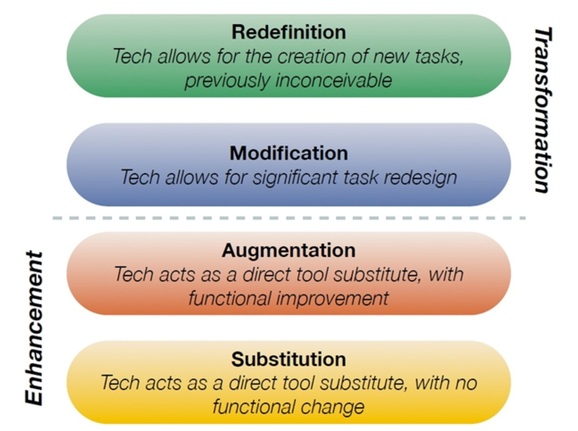As a Technology Integration Specialist, it is my job to assist teachers in the planning and implementation of technology integration. More often than not, teachers come to me with a cool tech tool they saw and ask if I can help them use it in the classroom. While I appreciate that they come to me with ideas and applaud their willingness to try something new, this is not exactly how integrating technology effectively works. Now, I am not saying that a teacher couldn’t choose to use said cool tech tool on a random lesson and create something more engaging than the original lesson. However, to be the most effective, teachers need to think about more than just using technology for the sake of using it.
During a conference I attended at The College of William and Mary last year, we played the “TPACK GAME.” This is using the TPACK Model which focuses on connecting technology, pedagogy, and content. We worked in groups of three and were given three stacks of cards (tech, pedagogy, and content) to pull from during the activity. Each group member picked a card from each stack and had to explain how the three cards could connect in the classroom. This was somewhat of a trick question at times because not every scenario equates to a well-crafted lesson. For example, if the content was historical figures of WWI, the technology was Microsoft Excel, and the pedagogy was discussion, it would be rather painful to try and make anything engaging out of that. Now, change the technology to Nearpod or Pear Deck, we could make the content and discussions work well together.
The last example would show how a teacher might enhance a lesson using technology. However, if you look at the SAMR Model,we need to think about how we then go from enhancing the learning to transforming the learning. If the goal is to get students to learn about historical figures of WWI, perhaps the transformation would be to use video production as the technology, and reciprocal teaching as the pedagogy. Students could create videos where they pretend to interview the historical figures. They are not just learning about the history at this point, they are IN it. Compare that to a teacher’s original lesson of “death by Powerpoint,” and you have now transformed the learning.
When deciding to use technology, I recommend that teachers take the time to familiarize themselves with both the SAMR and TPACK models while asking these essential questions:
1-What do I want students to learn?
2-What level of technology am I comfortable using or learning how to use?
3- What style of teaching am I willing to use for this lesson? (aka-how much control am I willing to give over to my students?)
4- What technology is available for me to use? (This is a great place to stop and set up an appointment with your building’s friendly ITRT)
Here are charts for both the TPACK and SAMR models to help visualize the technology integration process:


I think that mid-school year is such a great time for this kind of post. Mid-year is a great time to refresh our focus on what drives meaningful technology integration. The TPACK game is interesting. I appreciate your assessment of the original game’s strengths and slight misses in putting theory into action. I like the idea of choosing a card from content and pedagogical knowledge categories in a first round, then, after solidifying the learning goals, searching for a good “match” from the technology cards as round 2. Puts the tech in the support role vs. center stage. Have you worked with the TIM framework as well?
LikeLike